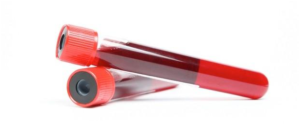The term “liquid biopsy” is currently used to refer to procedures in which a blood sample is used as the basis for a blood biopsy. (Or from other body fluids) While such analyses used to be based on some proteins, so-called tumor markers, concentrated research is currently focusing on the detection of tumor genome or whole tumor cells in the blood.
The topic of “early detection of cancer through a blood sample” is repeatedly addressed in the media. Less known important areas of application for liquid biopsy are the examination and follow-up of already known cancers (the “monitoring”).
This information sheet provides a brief overview of the current status of “liquid biopsies”.
In the case of known cancer
For Liquid Biopsy-based methods, a whole range of possible applications for already diagnosed cancer are being discussed. In this situation, markers can be used that have been shown to be associated with the already known tumor – e.g. gene changes found in the tumor tissue. That is why such tests are easier to develop than tests to detect a new cancer.
Monitoring of a cancer
If a patient is known to have cancer, Liquid Biopsy-based methods can be used to assess the course of the disease and the response of the cancer to therapy, e.g. chemotherapy. With the help of biomarkers in the blood, it is often possible to tell at an early stage whether or not the cancer can be well suppressed with the treatment used.
Immediately after the therapy, a Liquid Biopsy can be used to examine whether tumor remains are still present in the body. The detection of a “residual disease” is a prognostic factor that indicates an increased risk of relapse.
Recurrence early detection, aftercare
Once the cancer treatment has been completed, studies have shown that a relapse can be detected at an early stage if markers from the blood that are clearly associated with the already known cancer are regularly determined as part of the aftercare. Relapses could lead to very likely to be detected earlier than with imaging Procedure.
Adjusting cancer therapy
In particular, targeted cancer therapies can only be used if the tumor cells have certain biological properties. Some of these properties can also be investigated in a blood sample instead of on tumor tissue, e.g. by detecting cancer-promoting genetic alterations or proteins on circulating tumor cells.
Conversely, changes can also be demonstrated which indicate that the current treatment is less effective or no longer effective against the disease: in this case the therapy can be changed or discontinued. Unlike conventional biopsy, Liquid Biopsy ideally provides information on the entire cancer and not just the “conventionally” biopsied tumor or tumor part. This can be an advantage because tumors often have a non-uniform structure.
For early detection
The “classic” tumor markers have proven themselves for the early detection of proved to be too imprecise – in particular because they can also be increased in other diseases. Research scientist and companies are now working intensively on tests that early detection of cancer on the basis of cancer cells circulating freely in the blood tumor genome segments.
However, both the tumor cells of different types of cancer and the cells of tumors differ within one type of cancer. It is therefore necessary to develop a test that is as “universal” as possible so that as many different tumors as possible can be detected with it. However, the test must not become so non-specific, that it often generates “false alarms”. This is especially true if the test is not to be used as a supplement to existing procedures, but as the first or even the only early detection test.
Because only a small amount of tumor material usually enters the bloodstream at an early stage, very sensitive examination methods are also required. If the test is to be used as a standard method for early detection, it must still be inexpensive and easy to carry out.
For these reasons, the development of such tests for the early detection of cancer is a major challenge. This is a good article to read more on the subject – Liquid Biopsy: Revolutionizing Cancer Diagnoses and Treatments
Technical
With the new forms of Liquid Biopsy, so-called circulating tumor cells or tumor genome are usually detected in the blood.
Circulating tumor cells (CTCs) are individual cancer cells that enter the bloodstream from the tumor. They can be distinguished from normal blood cells by certain properties. In the meantime, there are several methods with which CTCs can be counted and in some cases also enriched. Once the cells have been isolated, their genetic material or protein composition can be examined. Circulating tumor DNA is a short section of genome that is released into the blood by tumor cells. However, DNA from healthy cells is also found in the blood. The tumor DNA is detected by removing the complete cell-free DNA from the blood sample. They are then specifically examined for changes (mutations) that frequently occur in the genome of tumor cells.








